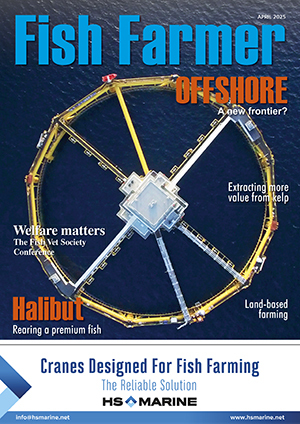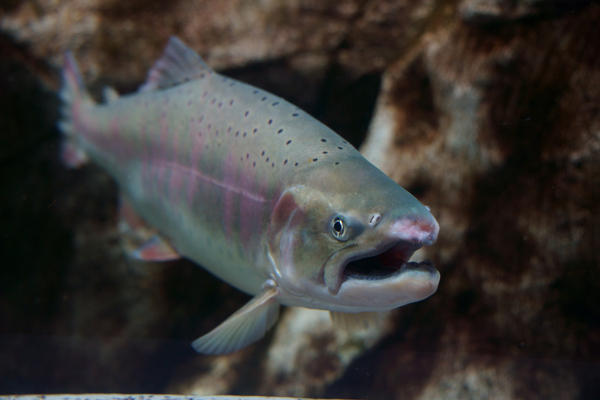Polls on welfare don't tell the whole story
A poll, suggesting that consumers are calling for higher welfare standards in fish farming, may not be as significant as it sounds, argues Dr Martin Jaffa.

If a survey was to ask 1,000 UK consumers whether they have any issues with the salmon they buy in British supermarkets, I am almost certain that 85% of respondents would not highlight concerns over the welfare of the fish. Instead, most would probably raise the question of price or quality.
Yet according to a new survey from Compassion in World Farming (CIWF), 85% of consumers believe that the welfare of fish should be protected to the same or greater extent as other farmed animals. This is not surprising given that question 4 in the survey asked: “Which of the following comes closest to your view – The welfare of fish should be protected to a greater /a lesser/ or the same extent than the welfare of other animals we eat?”
Even if consumers were not aware that salmon are farmed, the likelihood is that the majority would say that fish should be protected in the same way as other farmed animals with just a few saying either less or more. In fact, 76% said that animal welfare protection should apply equally to all farmed animals with just 9% saying fish should have greater protection. Thus, the statement that the overwhelming majority of UK citizens care about the welfare of farmed fish is somewhat questionable.
It is said that the UK is a nation of animal lovers, yet the RSPCA reported that in the first six months of 2024, they received 44,800 reports of animal cruelty in England and Wales (Scotland is not included). At the same time, it is also said that the UK is also a nation of animal killers, with fishing of salmon and trout and shooting of pheasants and grouse as well as stag hunting considered by some as cruel activities. How do CIWF square up the results of their survey with the reality of how some of the UK public treat their animals and wildlife?
Of course, the industry itself aspires to the highest possible welfare of the fish under their care but the reality is that welfare is not the highest priority for consumers when buying their food. The fact that the survey was commissioned by CIWF renders the results as rather meaningless because finding that 85% of consumers believe that fish should be protected from poor welfare issues is exactly the result CIWF would hope to achieve.
They clearly intend to use the results of the survey to campaign for the implementation of the highest welfare standards possible although how this will relate to farming practices is unclear. According to some activists just one dead fish is perceived to be an abuse of fish welfare.
One of the other questions asked of consumers was what considerations are prioritised when buying fish. Not surprisingly, freshness, quality and price were given the highest priority, something that has never changed in the 30 years and more that I have been involved in watching the consumer market.
What was most telling about the whole survey is that whilst 85% of consumers care about welfare issues, only 23% say that welfare is important in the buying process. A further 35% said that it might have some impact whilst 42% say it has no impact at all. This confirms the saying that what people say and what people do are two totally different things.
This is also apparent from the claim that 90% of consumers would like to buy higher welfare products. In fact, they already can, but more interestingly, 18% say that they are willing to pay considerably more for higher welfare products, whilst 49% say that they would pay a little extra. A further 23% say that they want to buy higher welfare products but cannot pay any more with 10% saying that they would not pay more. However, the lack of understanding of what this means is shown by the fact that consumers have never been willing to pay a premium for any labelling whether connected to welfare, sustainability, or origin.
A premium for origin?
I mention origin because the survey found that one of the lowest priorities given to fish purchase by consumers is origin. This is relevant here because the Scotland Food & Drink’s Knowledge Bank has suggested provenance is really important to the public. A survey of over 1,000 out-of-home diners found that 64% of respondents were likely to buy products labelled as Scottish and 42% of them were willing to pay more for Scottish produce.
Yet, provenance is not really a priority for those who dine out. Their choice is usually the cuisine or the chef or sometimes whether a restaurant is Michelin starred. I cannot say that I have ever encountered anyone who has suggested going to eat out because the restaurant serves dishes made from ingredients with a Scottish provenance. In fact, it is not easy to find a restaurant that highlights their food as coming from Scotland.
The survey asked the diners which foods they would be willing to pay a premium price for and top of the list came Scottish lamb (74%), followed by Scottish beef (71%). There is a website for Scottish lamb with information about where to buy Scotch lamb and which restaurants have it on their menu. Most of the restaurants are in Scotland and just two are listed for London but neither identify any lamb on their menus as having a Scottish provenance.
Beef is more likely to appear on menus with a Scottish provenance, such as Boisdale in London which has a section on the menu headed Scottish beef selected for Boisdale. Interestingly, it also has a section headed Scottish pizza crisp Neapolitan sour dough base topped with the very finest ingredients from Scotland. Unsurprisingly, pizza with a Scottish provenance did not feature on the list of foods for which diners were willing to pay a premium and I suspect that diners will be hard pressed to find other restaurants serving such Scottish specialities.
For shoppers wanting to eat Scottish foods at home, provenance does take a backseat as the CIWF survey found. There is very little evidence to show that consumers will pay a premium for food with a known provenance and certainly this is the case with salmon. I am aware of packs of salmon labelled as Scottish that are more expensive to buy but typically, the cut or whether it is skin off are usually what makes salmon different and more costly.
It would be desirable if foods with a Scottish provenance did receive a premium price but sadly despite what the survey suggests, what consumers say and what consumers do are usually two very different things.




